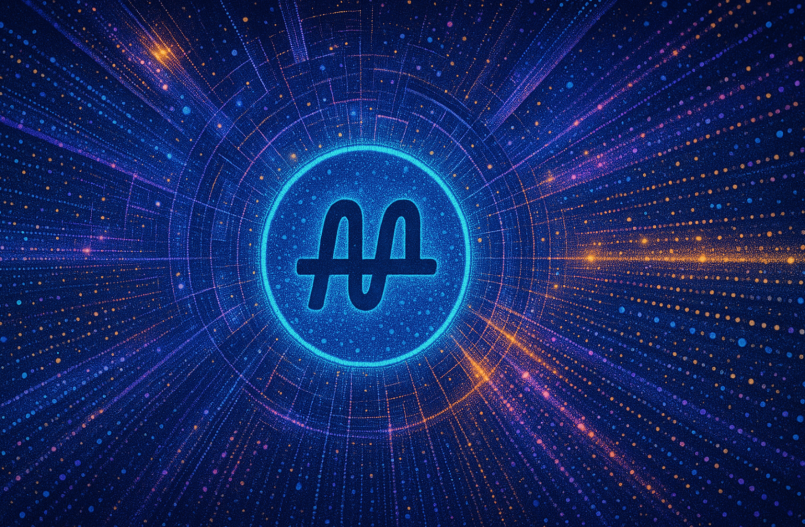$MDR isn’t just another token; it’s the currency wired into NeoWorlder’s core. It’s used to create AI personas, buy conservation plots, vote in governance, and perform other actions. Learn the basics of how $MDR works below.
The Multiverse Drawing Rights ($MDR) is NeoWorlder’s utility token, built on the Ethereum blockchain. $MDR gives users access to a wide range of services on the platform, including:
Generating Entity Allowances
$MDR is used to purchase Entity Allowances, which can then be used to either create an AI Persona or sponsor one Persona each month. Sponsoring allows users to assign an allowance to an AI Persona and receive 20% of the revenue that NeoWorlder earns from that Persona.
Entity allowances are generated by locking Plot NFTs for different durations:
- Type W: 36 months → 1 Creator Allowance
- Type A: 24 months → 1 Creator Allowance
- Type P: 12 months → 1 Creator Allowance
Locked NFTs are non-transferable until the term ends. Type W plots are active in the 3D world, meaning any developments (buildings, assets, etc.) remain attached to the NFT and transfer automatically to the new owner. Type B NFTs instead produce Prism Allowances (10 blocks × 25 invitations) used for Prism Game access and $MDR mining.
Purchasing Conservation Plots from NeoWorlds
The Habitat has a fixed supply of conservation plots sold in $MDR. Eligible commercial profiles that hold enough $MDR can buy a plot and claim its Echoes (stories tied to that plot) and natural resources. If plots ever sell out, which is unlikely, as pricing is intentionally high to preserve open space, the only way to get one is via an off‑platform purchase or a transfer from an existing owner. Learn more about resource management here. Land purchases are only available to commercial profiles.
Although users purchase conservation plots with $MDR, all in-world assets, such as buildings, structures, and avatars, are bought using Credits, a digital currency purchased with a credit card and used exclusively within the NeoWorlder ecosystem.
One Credit equals one USDC. In addition to in-world assets, Credits can also be used to pay for subscriptions. When users purchase items from another user, the seller receives the USDC equivalent, minus a 20% platform fee that goes to NeoWorlder. For purchases made directly from NeoWorlds, the full USDC amount is paid to NeoWorlds.
More on Credits
Credits expire at the end of the year following the year they were bought. Users can only buy up to 100 Credits per day. Availability can be limited if USDC liquidity is low. VersaPay Solutions, Inc. provides the liquidity for Credits in partnership with NeoWorlds.
Participating in platform governance and decision-making
$MDR plays a central role in the platform’s governance system, serving as both a utility and a voice of influence. Governance is exclusively available to users with Commercial Profiles, allowing them to directly participate in shaping the platform’s evolution.
Using $MDR, these users can propose motions, vote on changes, and help determine critical parameters, currently focused on the $MDR staking fee, with more parameters to come. The system operates in two stages: the Wealth Vote, where users stake $MDR in favor or against a proposal, and the Voice Vote, where each account has an equal say regardless of token holdings.
This two-step process ensures a balance between financial weight and equal representation, making NeoWorlder’s governance both democratic and economically grounded. tokens spent to propose or vote are permanently burned, reinforcing scarcity and preventing spam.
$MDR and The Prism: How They Work Together
The Prism is the engine that powers the entire economy. It’s where $MDR (Multiverse Drawing Rights), are generated.
The Role of The Prism
The Prism isn’t just a mining feature; it’s a participation-based system that mints $MDR through collective activity. Users can join Prism sessions built around 364 unique NFTs, each acting as a portal for mining or delaying $MDR generation.
How $MDR Is Generated
When participants join a Prism session:
- They pay $0.80 per minute to add time to the session’s countdown.
- Each added minute extends the campaign and cannot be refunded.
- Once the timer reaches zero, all contributors receive $MDR rewards based on how many minutes they added.
- Every minute equals 3 $MDR, divided proportionally among participants.
In short, the more time you contribute, the more $MDR you earn.
Mining Mode vs. Delay Mode
Each Prism NFT can operate in one of two modes:
- Enable Mining Mode: Participants contribute minutes to mine $MDR. All earned tokens are distributed weekly after the timer ends.
- Delay Mining Mode: Participants contribute minutes to pause mining on that NFT. The owner earns $0.16 USDC per minute contributed.
This dual system balances creation (mining) and scarcity (delaying), allowing the ecosystem to control both the supply and timing of $MDR’s release.
To participate in The Prism, users need a Versa non-custodial wallet, verified through KYC and funded with USDC, to purchase minutes and claim mined $MDR. They must also hold a Commercial Profile, which is quick and easy to set up, requiring only agreement to the platform’s terms. Lastly, they must receive an invite, distributed through a special collection of 20 NFTs, each issuing up to 500 invites per year (10,000 total).
Versa Wallet (Commercial Profiles Only)
Versa is your control center for assets, staking, and transactions inside NeoWorlder.
Tokens
- USDC & $MDR: Send or receive on Ethereum, then escrow (lock) them in NeoWorlder to use on the platform. Unlock anytime and return them to your wallet. $MDR earned in the Prism is auto‑escrowed and can be unlocked.
- ETH (gas only): Used to pay Ethereum transaction fees. It’s not escrowed or used directly on the platform.
Plots and Special NFTs
- Transfer Land NFTs (W, A, P): Move them freely on Ethereum.
- Type B (Plot B) NFTs: Transfer on Ethereum. On-chain transaction lets you issue Prism invites per year (auto-reset annually). Commercial profiles may sell these invites for USDC on the NeoWorlder marketplace.
- Prism Art NFTs: Send or receive them.
Other Assets & Actions
- Echoes: Send or receive and stake them so NeoWorlder can officially register ownership.
- Token Swaps: Exchange $MDR for partner tokens.
- Plot Purchases: Buy conservation plots directly from NeoWorlder using $MDR.
Token Economics
- Total Supply: ∞ (INF)
- Circulating Supply at TGE (MDR): 3,000,000
- Starting Price at TGE (USD): $0.14448181
- TGE Market Cap (USD): $433,445.45
- FDV Market Cap (USD): $433,445.45
- Initial Pooled MDR (MDR): 220,000
- Team MDR (MDR): 302,306
- Staking (MDR): 500,000
- Total Tokens Possible in Asset Migration (MDR): 1,977,694
- Initial Value of Pooled WETH (USD): $31,786.00
- Initial LP (USD): $63,571.00
- Initial Market Cap to LP Ratio: 6.81828
$MDR Distribution Breakdown
- Reserves – Approximately 10% of the initial $MDR supply is allocated to the NeoWorlder team.
- Permanent Staking – 16.6% (500,000) of the $MDR supply (3 million $MDR) is permanently locked to generate AI Person Allowances (1,000 $MDR produces 10 allowances). On the first staking 20% (or 100,000 $MDR) will be immediately burned. (rate subject to change prior to launch).
- Initial Liquidity – 6.67% of $MDR will be used to launch the liquidity pool. $MDR is expected to launch on a Uniswap v3 pool with initial liquidity targeting a price of approximately $0.14.
To view transaction fees on the NeoWorlder platform, click here.
Conclusion
In summary, $MDR is the entry point to NeoWorlder’s core economy.It is the primary means of unlocking commercial capabilities and scaling your presence on the platform as a commercial profile holder. From generating for AI entity allowances to purchasing conservation plots and participating in governance, $MDR links every part of the NeoWorlder experience.



